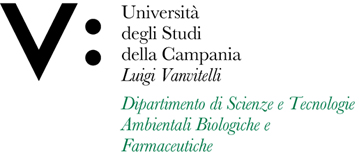Nicola ALESSIO
Insegnamento di BIOLOGIA MOLECOLARE
Corso di laurea in BIOTECNOLOGIE
SSD: BIO/11
CFU: 4,00
ORE PER UNITÀ DIDATTICA: 32,00
Periodo di Erogazione: Annualità Singola
Italiano
| Lingua di insegnamento | Italiano |
| Contenuti | La biologia molecolare è uno strumento essenziale per comprendere le basi molecolari della vita e per approfondire la conoscenza dei meccanismi biologici che regolano la crescita, lo sviluppo, la riproduzione e l'adattamento degli organismi viventi. |
| Testi di riferimento | G.Capranico et al. |
| Obiettivi formativi | Il corso si propone di fornire agli studenti una comprensione approfondita della struttura, della funzione e della regolazione delle macromolecole biologiche, come il DNA, l'RNA e le proteine, concentrandosi sulle vie biochimiche coinvolte. Saranno esaminati i meccanismi fondamentali della replicazione e della riparazione del DNA, nonché quelli responsabili del flusso dell'informazione genetica dal DNA alle proteine, ovvero la trascrizione e la traduzione, inclusi i meccanismi di regolazione cellulare correlati. In questo modo, gli studenti acquisiranno la capacità di comprendere e conoscere la struttura, la funzione e l'attività delle macromolecole biologiche, nonché le vie coinvolte nella regolazione e nel controllo del flusso dell'informazione biologica. |
| Prerequisiti | Non sono previsti prerequisiti, anche se è necessario aver acquisito conoscenze di base di chimica generale. |
| Metodologie didattiche | Il corso è organizzato in lezioni frontali con supporto informatico (Power Point). |
| Metodi di valutazione | La valutazione dell'apprendimento avverrà attraverso un colloquio orale durante il quale verranno poste domande riguardanti gli aspetti fondamentali della biologia molecolare. Le domande saranno specifiche e mirate a valutare le conoscenze di base sull'argomento. Lo studente dovrà dimostrare di comprendere gli aspetti chiave della struttura, della funzione e della regolazione delle macromolecole biologiche, come il DNA, l'RNA e le proteine. Saranno valutate anche le capacità dello studente di discutere tali argomenti e di stabilire connessioni significative. La valutazione sarà espressa in trentesimi, con un punteggio minimo di 18 e un punteggio massimo di 30/30 con possibilità di lode. |
| Altre informazioni | Nessuna |
| Programma del corso | STRUTTURA DEL DNA |
English
| Teaching language | Italian |
| Contents | Molecular biology is an essential tool for understanding the molecular foundations of life and for deepening our knowledge of the biological mechanisms that regulate the growth, development, reproduction, and adaptation of living organisms. This field of research primarily deals with the study of the structure, function, and regulation of the molecular components of cells, such as nucleotides, nucleic acids (DNA and RNA), proteins, and cellular membranes. |
| Textbook and course materials | G.Capranico et al. |
| Course objectives | The course aims to provide students with a thorough understanding of the structure, function, and regulation of biological macromolecules such as DNA, RNA, and proteins, focusing on the involved biochemical pathways. Fundamental mechanisms of DNA replication and repair will be examined, as well as those responsible for the flow of genetic information from DNA to proteins, namely transcription and translation, including related cellular regulation mechanisms. In this way, students will acquire the ability to comprehend and grasp the structure, function, and activity of biological macromolecules, as well as the pathways involved in regulating and controlling the flow of biological information. |
| Prerequisites | There are no prerequisites, although it is necessary to have acquired basic knowledge of general chemistry. |
| Teaching methods | The course is organized in frontal lessons with computer support (Power Point). |
| Evaluation methods | The assessment of learning will take place through an oral examination during which questions regarding the fundamental aspects of molecular biology will be asked. The questions will be specific and aimed at assessing basic knowledge on the subject. The student must demonstrate an understanding of key aspects of the structure, function, and regulation of biological macromolecules such as DNA, RNA, and proteins. The student's ability to discuss these topics and establish meaningful connections will also be evaluated. The assessment will be graded on a scale of thirty, with a minimum score of 18 and a maximum score of 30/30 with honors possible. |
| Other information | None |
| Course Syllabus | Experiments by Avery, Griffith, Hershey e Chase. |








